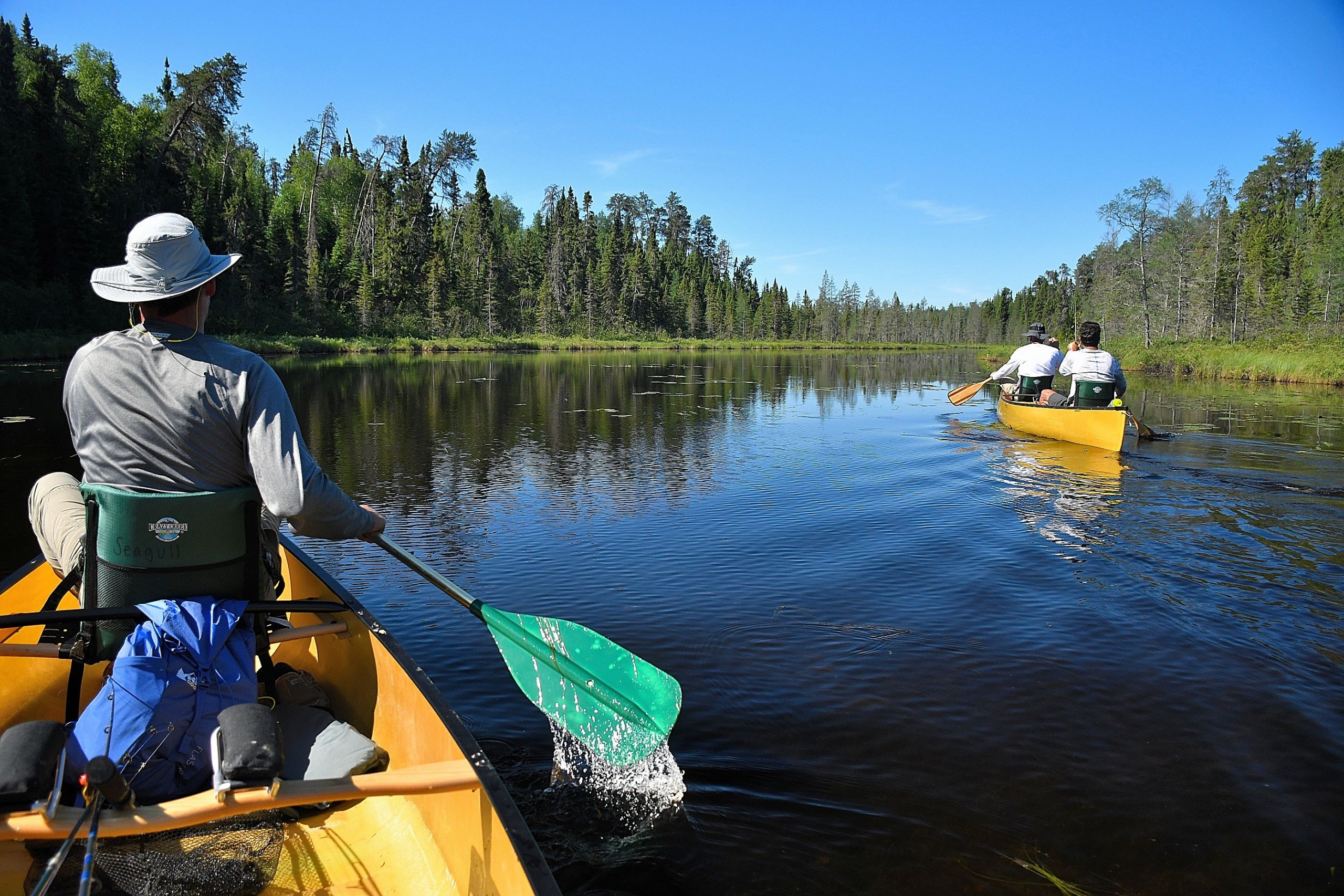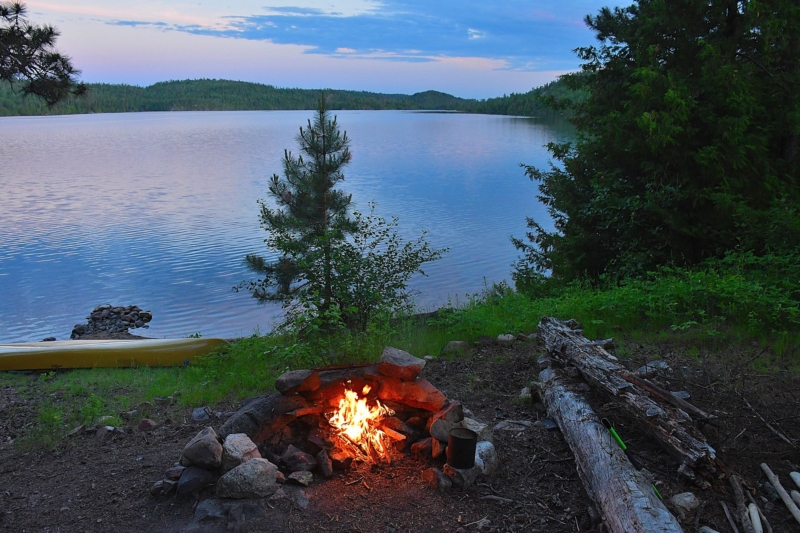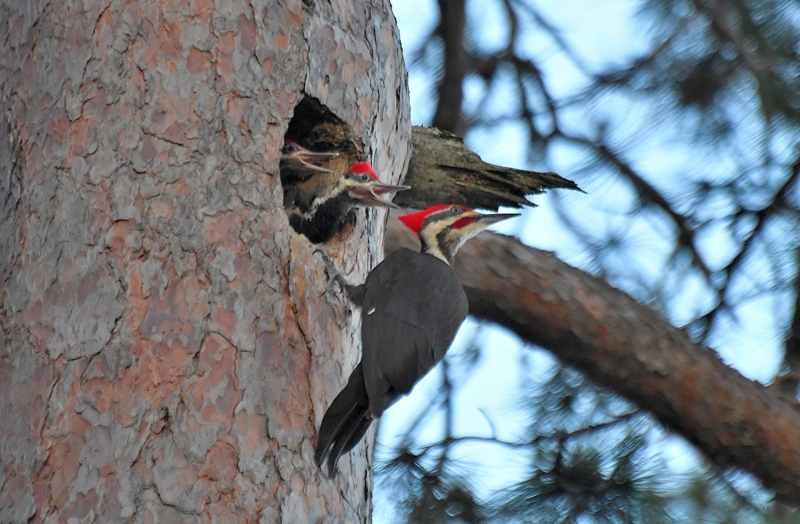The Most Spectacular Places On Earth
This million-acre paddling paradise offers the opportunity to experience a rare, pristine wilderness for an afternoon or an extended canoeing and camping trip. A rich diversity of scenery, terrain and wildlife make this one of National Geographic’s “50 Trips of a Lifetime” — so how long are you going to wait?
The Boundary Waters Canoe Area Wilderness offers more than a million acres of woods and water untouched and unaffected since the glaciers melted and created over a thousand crystal-clear lakes.

On the boundary between Minnesota and Canada, the BWCAW is neighbor to Quetico Park, and together the two create the largest canoe wilderness in the world.
1,200 miles of canoe trips.
The lakes, streams and rivers of the Boundary Waters form a seemingly endless chain of canoeing opportunities. Pick a camp site on an island one night, then paddle and portage three lakes away for the next night. View BWCAW maps.
An outdoor adventure.
Perched on a granite outcropping above a silent Boundary lake, you wake to the sound of loons calling out and otters searching for breakfast. There are no boat motors here, or planes overhead, so all you hear is the earth itself. At night, when the sun goes down, you see the stars as you never have. You’re 40 miles from the nearest man-made light, but the heavens are bright enough for all of us.
Cooking and cleaning.
Camp stoves are best for cooking the day’s catch—they heat quickly, work in the rain, and have less impact on the earth. Cans and bottles are not allowed, except for containers of fuel, insect repellant, medicines and other non-food/beverage items. Food may be stored in plastic containers that are packed out with you, and remember to store food scraps, too—they attract unwanted visitors. When it comes to cleaning, clean everything. Wash dishes at least 150 feet from lakes and streams (soap pollutes the water), and the same goes for bathing. Do not burn trash—pack it out. Use toilet facilities at existing campsites, or if you are hiking, dig a pit at least 150 feet from the waters edge. Fish entrails should be buried six inches deep. State law prohibits putting fish remains into the water.
Packing out what you pack in.
This is one of the most beautiful places you’ll ever see, and this is the rule: Leave no trace. Leave your camp site cleaner than when you got there, in other words. Pack every scrap, every bit of waste, everything you brought in back out again. The only thing you should leave, in fact, is some firewood for the next campers. They’ll definitely appreciate that.
An outfitter’s paradise.
It’s everyone’s paradise, really, it’s just that canoe trip outfitters get to work here. They’ll set you up with everything you need to explore this untamed wilderness in northeastern Minnesota—from food and fishing gear, to tents and canoes. They’ll also help you plan your route.
Camping and campfires.
You can make yourself at home at any of the U.S. Forest Service camp sites but remember: you are a privileged guest in one of the world’s most special places. In other words, take care of it. Each site features a tent pad, box latrine and fire grate. Campfires are allowed only within the fire grates and should be built of dead wood found on the ground and away from the camp site. It is illegal to cut live vegetation for any reason. Drown your fires with water any time you are away from camp, and stir the ashes until they are cool to the touch.
Permits and entry points.
The BWCAW and Quetico Provincial Park operate on a reservation system. Permits are reserved for a specific lake entry point on a specific day. Depending upon where you travel, there can be reservation fees and user fees. Your outfitter can help you get the right permits for your chosen route and can make the reservation for you. In light of the limited numbers of permits, it is wise to reserve early. To make a reservation on your own, call 1-877-550-6777. If you are visiting Quetico Provincial Park you will also need a Remote Border Crossing Permit for each member of your party. If you are planning your first trip to the BWCAW, it is best to call an outfitter for guidance.
Ten’s a crowd.
Nine people and four watercrafts is the maximum group size. Smaller groups reduce impact to the area and increase your wilderness experience.
The BWCAW alone contains over 1000 lakes and 1200 miles of canoe routes through a variety of terrains across lakes, streams and rivers.
There is a long and colorful history behind the canoe country– from the days when these lakes were home to the several native tribes, through the current struggles over preservation of this largest wilderness area east of the rockies. There are many fascinating books on the subject that can be a nice addition to the enjoyment of your trip through canoe country.
Many of the features of the land and lakes were fashioned during the last ice age as great glaciers scoured clean vast sections of North America. Evidence of the glaciers is readily apparent today in the smoothed granite with parallel striations and gently rolling shorelines along the larger lakes. Throughout canoe country, cliffs, valleys and ridges follow patterns established by the progress of the glaciers.
Natives lived in the canoe country for thousands of years before the first explorers arrived. Many of the portage trails and canoe routes were well established in 1689 when Jacques DeNoyan was led to Lake of the Woods by native guides. Since then, there have been missionaries, explorers searching for the Northwest Passage, traders seeking the fine and plentiful pelts of beaver and otter to supply the fashion trends of Europe, prospectors, and timbermen harvesting the expanses of towering pines. Fortunately, the part of the region we know as the BWCAW and Quetico Park were, in great measure, spared the ravages of the steam shovel and the chain saw. It is ironic that the rugged terrain and numerous lakes that make the canoe country so spectacular prevented the prospectors and loggers from penetrating its interior.


Today, both the BWCAW and Quetico Park are protected from logging, mining, and commercial development within their borders. During the last century there have been a few hearty souls that chose to live within this extraordinary region. It was a hard life to be sure and nothing came easy. Homes were built with an axe and perhaps a saw. They lived by what could be caught, killed, gathered or carried back from the rare trip into the nearest town. Many of theirs lives and stories are recounted in books now that they are all gone. Your outfitters can help you find some titles or even spin a few yarns about some of the Old Timers.
Now the only residents are the original ones: moose, otters, squirrels, eagles and many others animals. We are visitors to the canoe country and should respect the home of our hosts.





